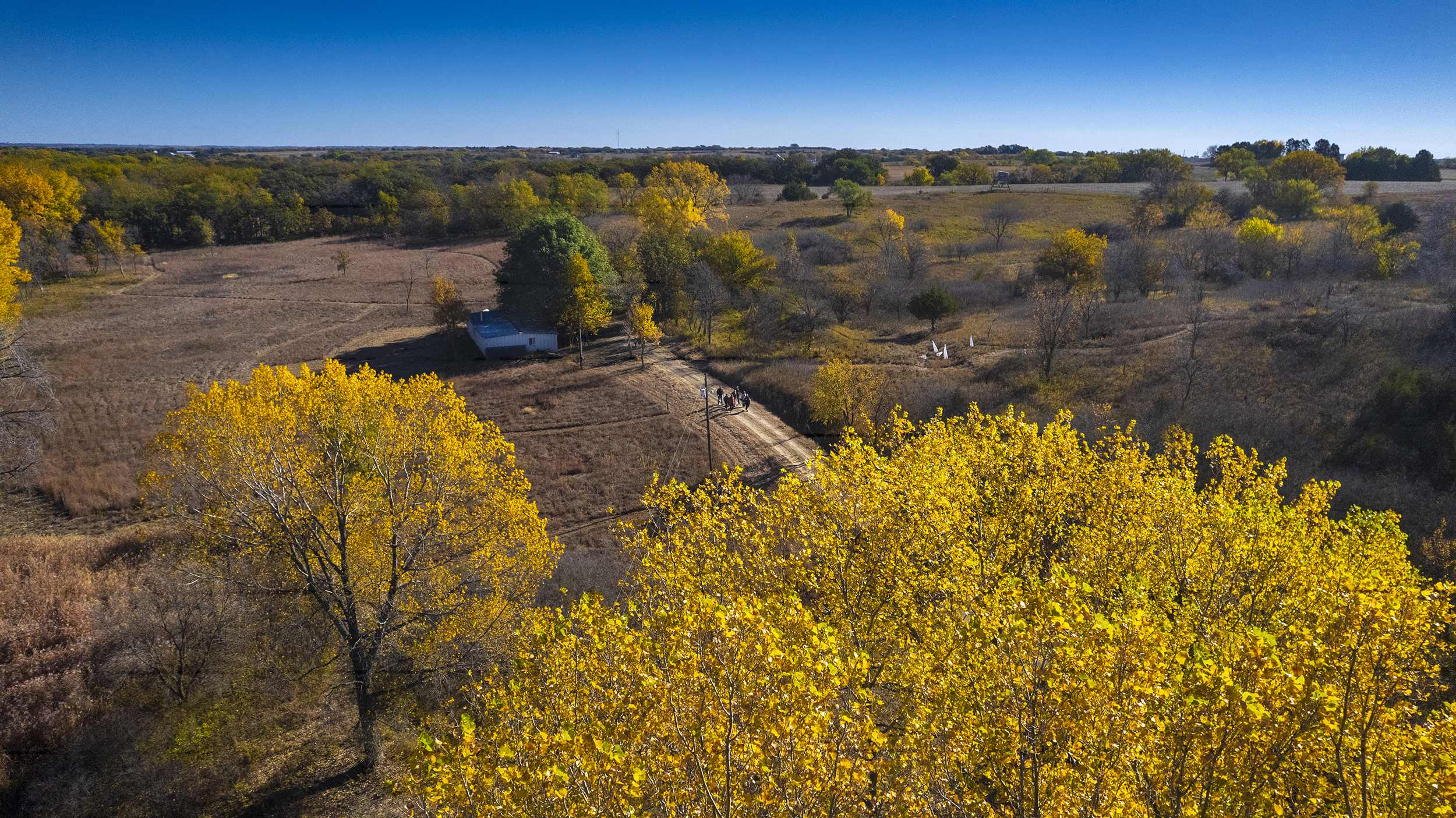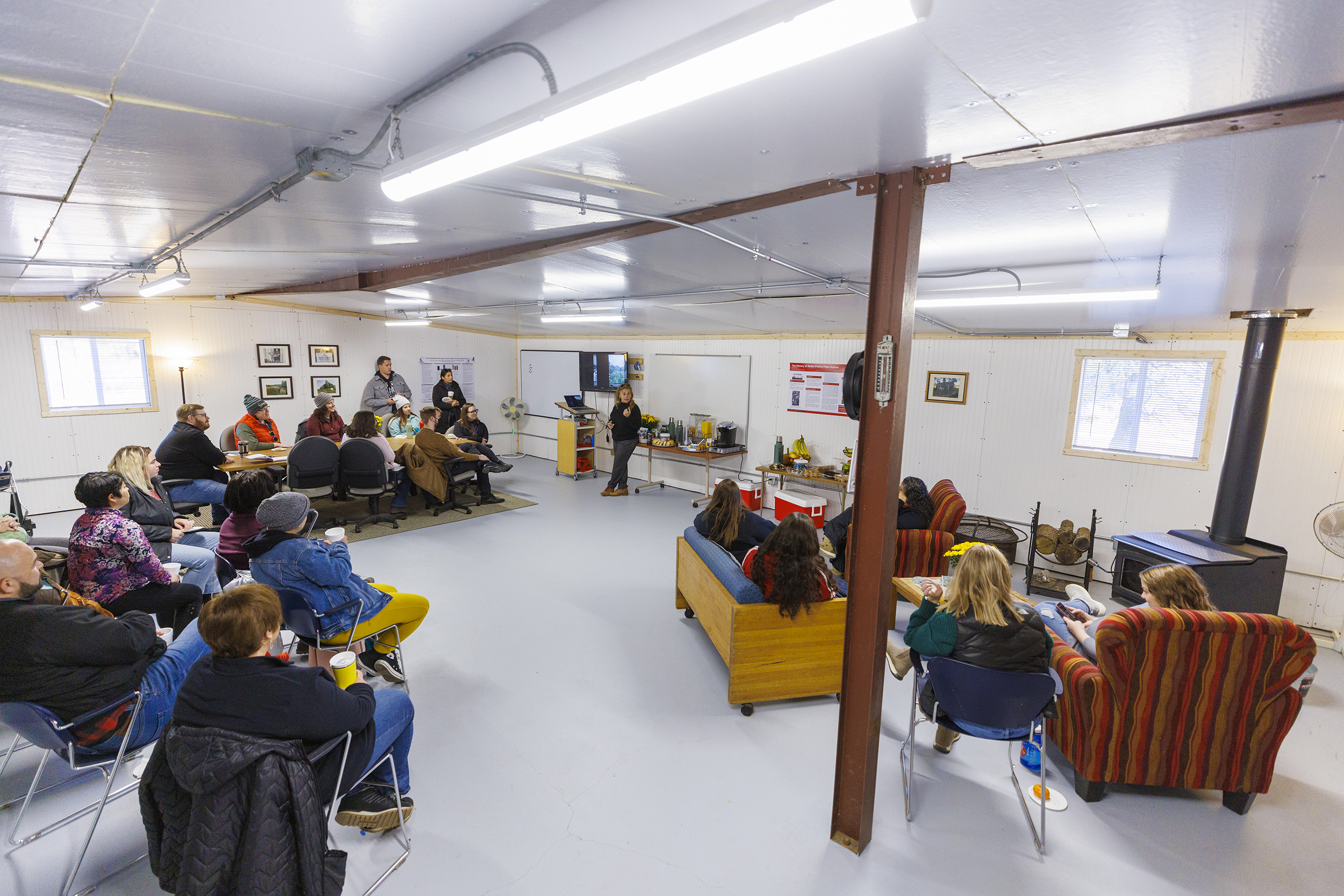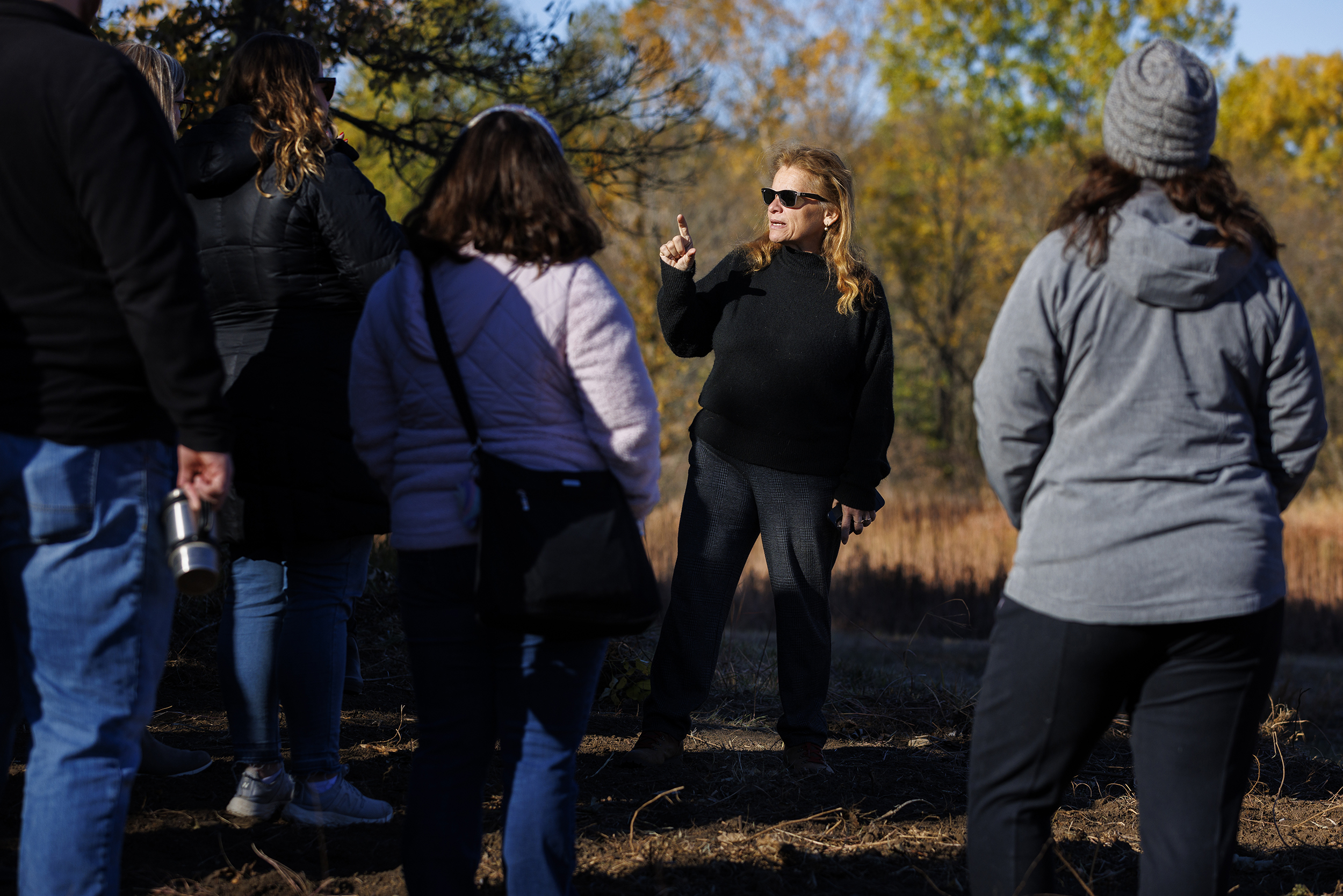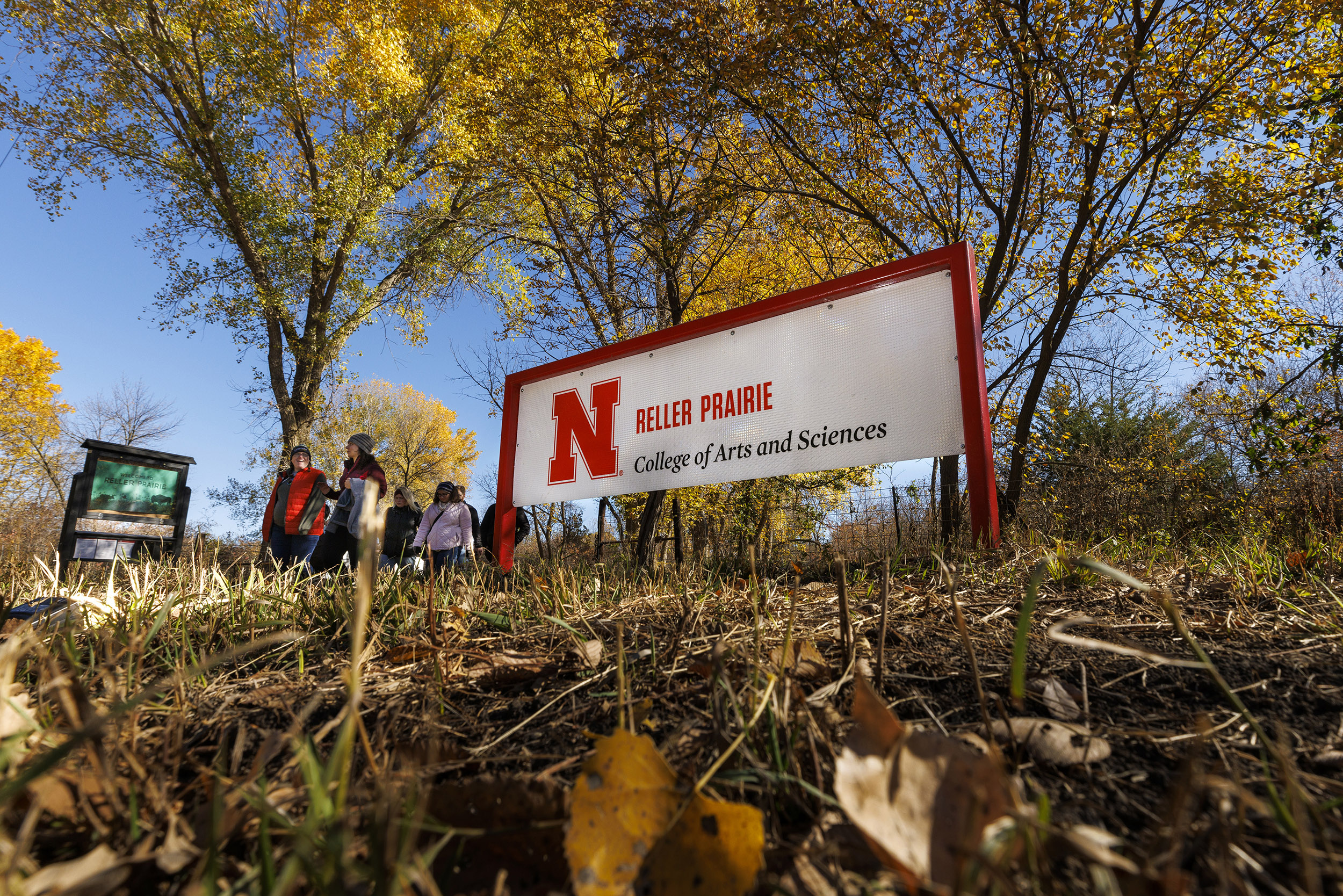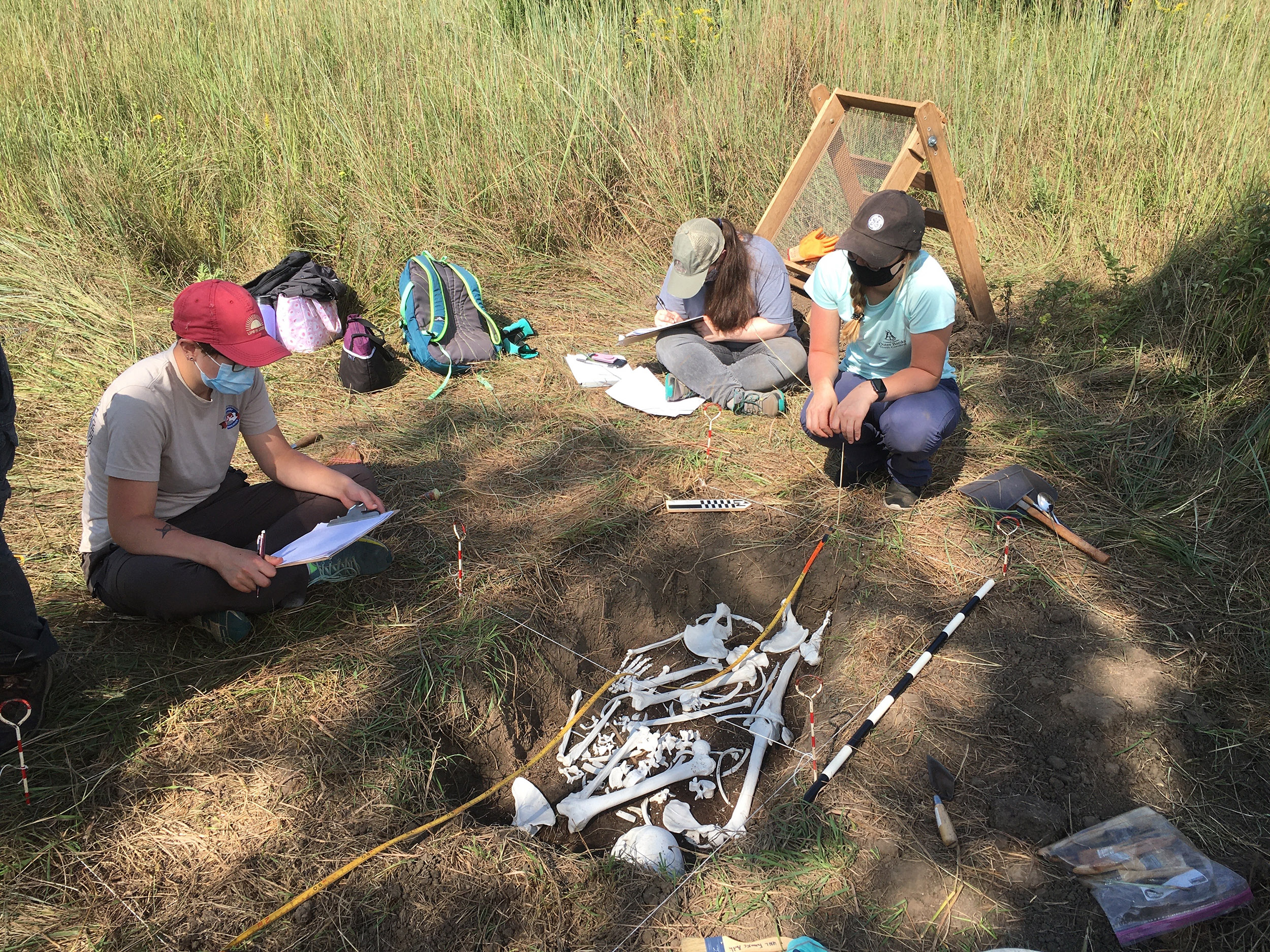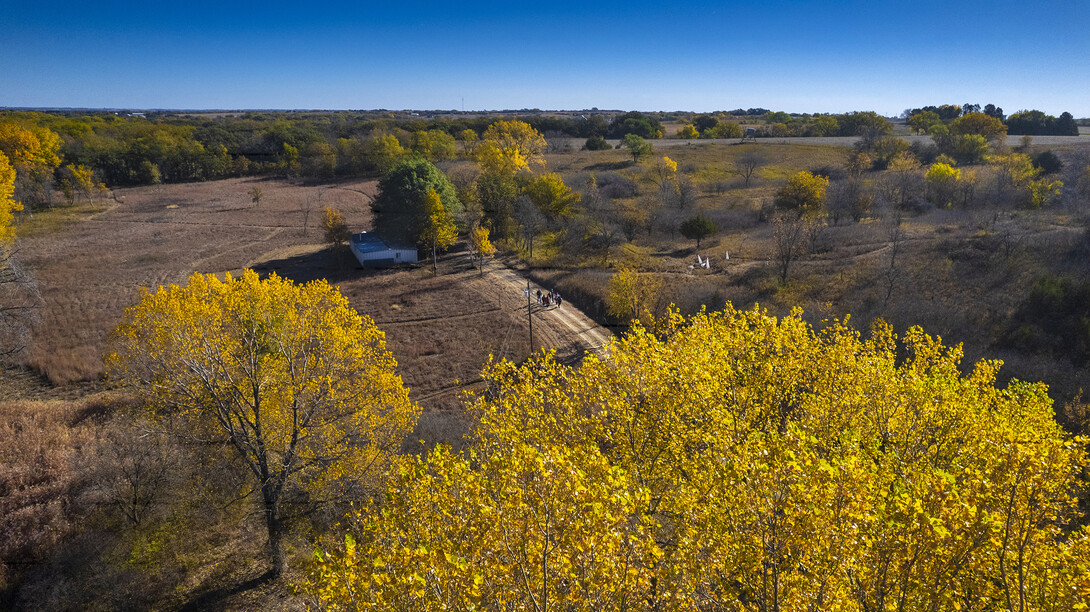
Following a three-year cleanup effort and after a decade of limited use, the College of Arts and Sciences’ Reller Prairie Field Station is ready to support a full range of experiential learning at the University of Nebraska–Lincoln.
To mark the occasion and celebrate the hard work of dozens of volunteers over the past three years, the School of Global Integrative Studies is hosting a ribbon-cutting and open house at 2:30 p.m. Oct. 21 at the field station, 20210 S.W. 29th St., Martell, south of Lincoln.
The effort involved the dedication of faculty, staff and other volunteers working at least one Saturday a month to clean up overgrowth, remove invasive species including redcedar, and completely gut and remodel the on-site steel building, transforming it into a classroom, office and lab. The building is now insulated and has a wood-burning stove for heat, making it available during all seasons, when previously the summer months had been too hot and the winter months too cold.

Sophia Perdikaris, SGIS director and Happold Professor of anthropology, said on any given Saturday cleanup, 25 to 60 volunteers, including spouses and area farmers, helped on the project.
The transformation began in 2019 when Perdikaris learned about the property from Jon Garbisch, associate director of the Cedar Point Biological Station near Ogallala. Reller is part of the School of Biological Sciences. Perdikaris said that Michael Hermann, SBS director, was critical in the new collaboration and it would not have happened without his support. SGIS holds a memorandum of understanding with SBS to use the site, but Perdikaris is hoping that Reller will continue to transform into an interdisciplinary hub, bringing representation from all the disciplines and local stakeholders in providing affordable, cutting-edge field training,
“We want to also promote cross-disciplinary dialogue facilitating research of relevance from the local to the global spheres,” Perdikaris said.
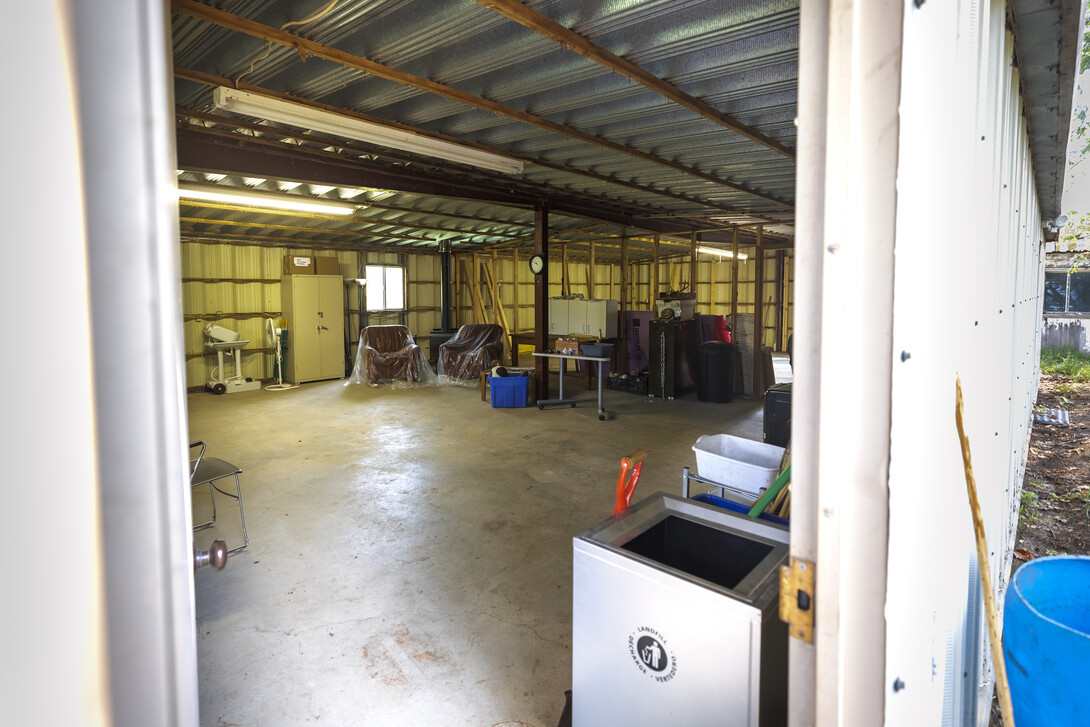
Even before the project started, Dai Shizuka, associate professor in the School of Biological Sciences, was researching birds and bird behavior at Reller. As the cleanup began, many more faculty helped the process and identified research of interest, including Paul Hanson, professor of quaternary geology, and Becky Young, professor of practice in agronomy and horticulture. SBS graduate students have also completed projects on spiders and monarch butterflies at Reller.
“The whole idea behind Reller is to have immersive experiential learning opportunities that provide critical training within different disciplines but connects researchers to the field,” Perdikaris said.
Though the property has been used the past two years for some classes and research, the granting of a physical street address and completion of the building renovations has opened new opportunities for classes, Perdikaris said, including a partnership with Lincoln Public Schools’ Zoo School, which is the Science Focus Program. LPS-SFP students already completed junior projects last academic year and will continue to utilize the site.
LuAnn Wandsnider, professor of anthropology and associate director of SGIS, previously found archaeological evidence as part of a 2011 investigation of Salt Creek, and the archaeological field school in 2021 led by Phil Geib, associate professor of anthropology, confirmed the original observations. This evidence informs the history of Native use of the area and provides a great terrain for the development of technical skills and training of up-and-coming archaeologists to kick-start their careers.
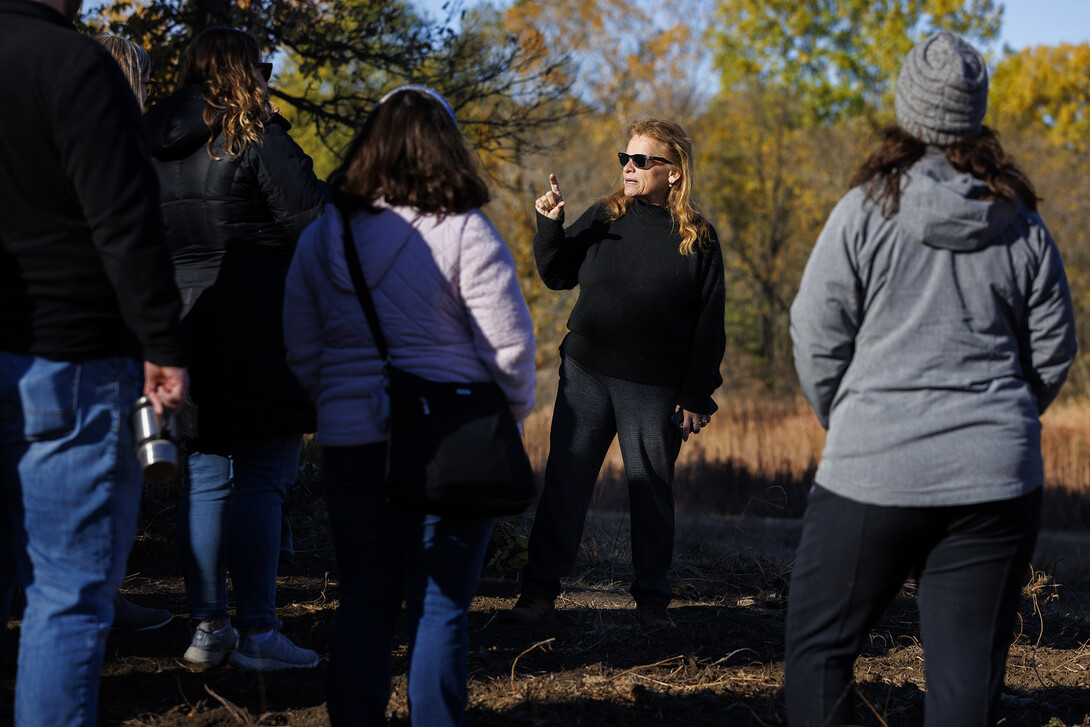
“There will be many new jobs available for archaeologists, especially with the infrastructure bill recently passed by Congress,” Wandsnider said. “I get email requests from agencies and firms looking for archaeological field specialists. At Reller, we can provide the kind of entry-level training students need so that they can gain on-the-job experience over the summer (as interns) and come back to continue their education
“Our former students, with similar beginnings, have advanced into well-paid careers in heritage and museums, recreation and resource management.”
Field training can sometimes come with a high price tag when students need to pay to travel. Living expenses, food, transportation and other fees accumulate to make such experiences only available to students that can afford them both in money and time away from home, Perdikaris said, but having the facility and land at Reller lessens those costs considerably.
“It was really critical for us that we provide top-notch training in field skills and methodologies, combining cutting-edge education that is also affordable and gives access to all,” Perdikaris said. “We want to make archaeology, and field science in general, something that every student can experience and really get all the skills that they need, without having to worry about making decisions that are rough on a family or an individual financially. Reller provides that.”
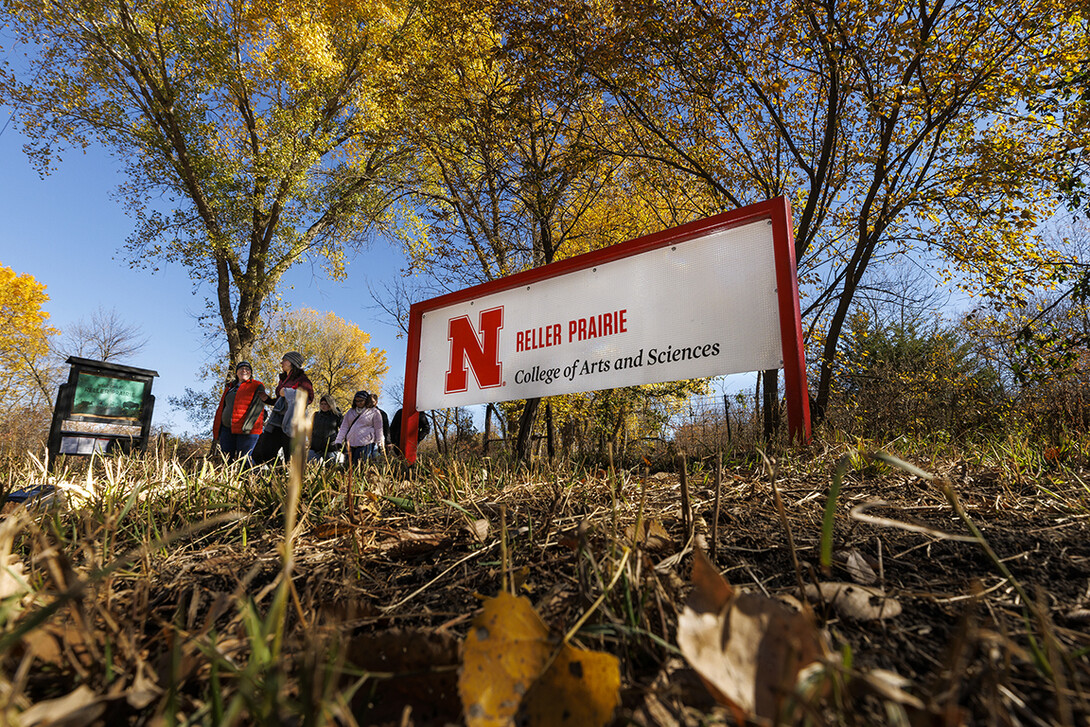
Wandsnider has also led her classes through some anthropology and archaeology exercises, including stone tool-making and using GPS to collect location information. Geib’s students fired ceramic vessels they had made with local clays, learning about the challenges faced by traditional potters. These class experiences were especially meaningful during the COVID-19 pandemic shutdown.
“It was wonderful, because we could be together, outside, distanced and safe,” she said. “And it’s a great place to do experiential kinds of activities like that to help students appreciate what is behind the objects they are uncovering from the ground.”
Also among the students already utilizing Reller are those studying forensic anthropology under William Belcher, associate professor of anthropology, who has worked with various entities to identify remains, including those recovered in wartime battlefields and in criminal cases. Belcher has made use of the Reller station to carry out taphonomic experiments and to teach excavation techniques with simulated remains and sites.
“We train the students how to excavate those graves and implement a process very similar to the process the Department of Defense uses for excavation to recover service members lost in war,” Belcher said.
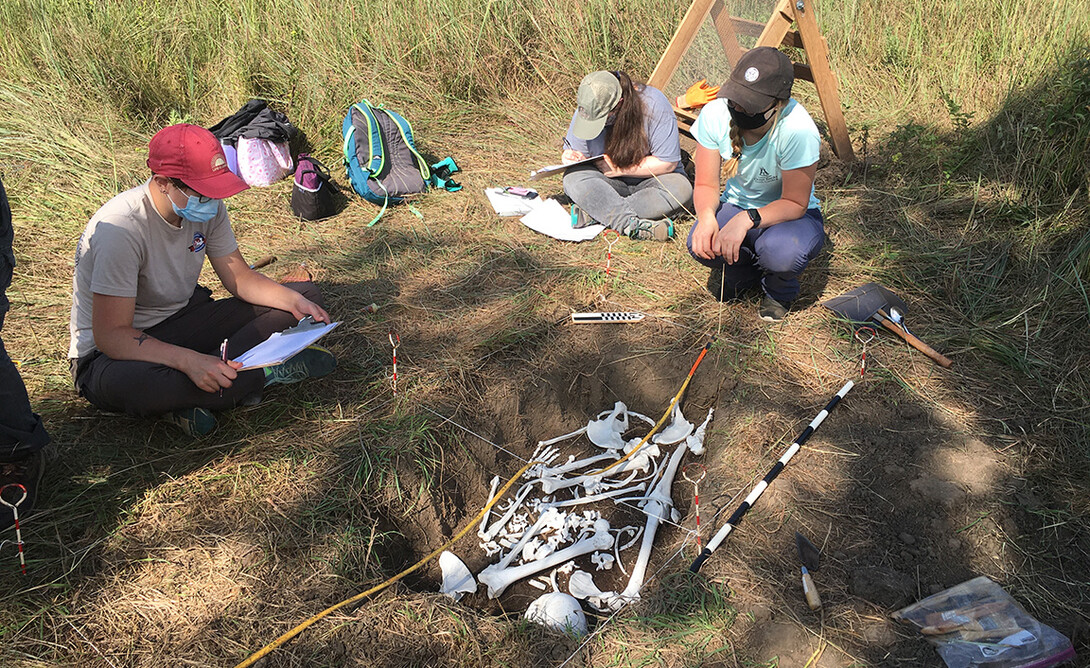
Reller also provides ample opportunity for decomposition studies, Belcher said, which would be important for this region of the United States.
“One of the first questions law enforcement has is, ‘How long has this person been dead?’” Belcher said. “We don’t have baseline data for the Great Plains at all. There are several environments at Reller. There’s a riparian forest along the stream, a forest gallery, a meadow and the high-grass prairie. We need to look at the decomposition process within each one of those environments.”
Belcher is working to grow this research, pending funding. New this year is the study of soil DNA, which will examine how DNA from a decomposed body seeps and spreads in the soil under and around it.
“As something decomposes, how did the DNA get into the soil and plume out, and how far away from the body are we going to get extraction of DNA from the soil?” Belcher said. “It’s important because if DNA survives, we’re going to see if we can develop ways of detecting DNA in soil of missing service members from World War II, and have a field capability so that they can be identified in the field.”
Perdikaris welcomes all interested faculty, students and community members to contact her if interested in using Reller.
“I am looking forward to further developing the capacity and capabilities of Reller, to continue serving the educational and research needs of our community, and showcasing experiential learning near home at its best,” she said.
Register here for the ribbon cutting, though registration is not required.
